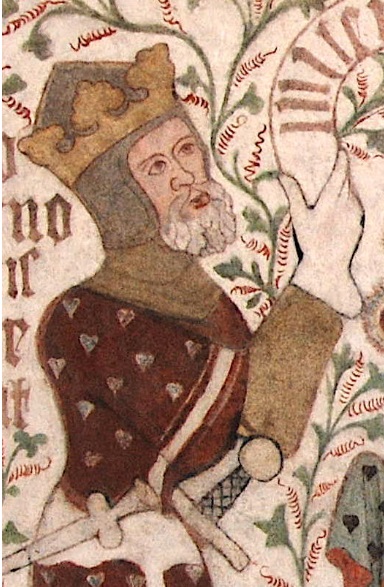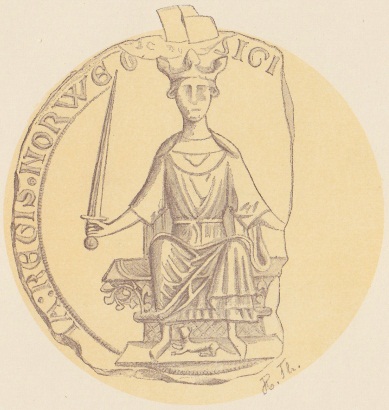© Unofficial Royalty 2025

Princess Mary of Great Britain, Landgravine of Hesse-Kassel; Credit – Wikipedia
January 14, 1766 – Death of King Frederik V of Denmark and Norway at Christiansborg Palace in Copenhagen, Denmark; buried at Roskilde Cathedral in Roskilde, Denmark
Frederik had a very sensual nature and loved wine and women. He spent so much time visiting Copenhagen’s pubs and brothels that his father King Christian VI considered disinheriting him from the throne. When he married Louisa of Great Britain in 1743, the Danish government hoped (incorrectly) that marriage would put an end to his affairs and drunkenness. Frederik and Louisa had five children. When Frederik became king, he did take part in the government by attending council meetings. However, he was afflicted with alcoholism, and most of his reign was dominated by his very able ministers. In 1752, a year after Louisa died due to complications from a miscarriage. Frederik married Juliana Maria of Brunswick-Wolfenbüttel and the couple had one son. In 1760, Frederik broke his leg in a drunken accident, which affected his health for the rest of his life. He died on January 14, 1766, at Christiansborg Palace in Copenhagen, Denmark at the age of 42.
Unofficial Royalty: King Frederik V of Denmark and Norway
January 14, 1767 – Birth of Maria Theresia of Austria, Queen of Saxony, wife of King Anton of Saxony, in Florence, Grand Duchy of Tuscany, now in Italy
Full name: Maria Theresia Josepha Charlotte Johanna
Maria Theresia was the eldest child of Pietro Leopoldo I, Grand Duke of Tuscany (later Leopold II, Holy Roman Emperor) and Infanta Maria Luisa of Spain. In 1787, she married the future King Anton of Saxony. The couple had four children, none of whom lived past infancy. In 1827, Maria Theresia and her husband became King and Queen of Saxony. Sadly, her tenure as Queen was short-lived. Just six months after her husband’s accession, Queen Maria Theresia died at the age of 60.
Unofficial Royalty: Maria Theresia of Austria, Queen of Saxony
January 14, 1772 – Death of Princess Mary of Great Britain, Landgravine of Hesse-Kassel, daughter of King George II of Great Britain, at Hanau, Landgraviate of Hesse-Kassel, now in Hesse, Germany; buried at the Reformed Church in Hanau
In 1740, Mary married Friedrich II, the future Landgrave of Hesse-Kassel. As Landgrave of Hesse-Kassel, Friedrich became famous during the American Revolution as a supplier of thousands of Hessian soldiers who fought on behalf of the British. Mary and Friedrich had four sons and they are the ancestors of six of the ten current European monarchs. The marriage was unhappy, and Friedrich reportedly abused Mary to spousal abuse. The couple separated in 1754 on Friedrich’s conversion to Roman Catholicism. Her father-in-law supported Mary as she did not wish to return to Great Britain because she believed it was her duty to remain in the place that God had placed her and that she would ensure her sons would be brought up Protestant. In 1756, Mary moved to Denmark, to take care of the children of her sister Louisa of Great Britain (wife of King Frederik V above), who had died in 1751. She took her children with her, and they were raised at the Danish court and her sons were married to Danish princesses. Her husband succeeded his father as Landgrave of Hesse-Kassel in 1760, and so Mary was technically Landgravine consort for the last twelve years of her life, despite her estrangement from her husband. Mary died on January 14, 1772, in Hanau, Landgraviate of Hesse-Kassel, now in Hesse, Germany, at the age of 48.
Unofficial Royalty: Princess Mary of Great Britain, Landgravine of Hesse-Kassel
January 14, 1823 – Birth of Carlo III, Duke of Parma at the Villa delle Pianore near Lucca in the Duchy of Lucca, now in Italy
Full name: Ferdinando Carlo Vittorio Giuseppe Maria Baldassarre
Carlo’s father was in financial difficulty and he decided to marry his son to a princess with a large dowry. The chosen bride was Louise Marie Therese of France, the granddaughter of King Charles X of France. Carlo and Louise Therese Marie were married in 1847 and had four children. Carlo became Duke of Parma upon the abdication in 1849 of his very unpopular father Carlo II Ludovico. Carlo III, Duke of Parma reigned for only five years and was assassinated for his authoritarian policies. His six-year-old son Roberto became Duke of Parma with his mother as regent but had a short reign. In 1859, the Duchy of Parma was abolished during the Italian unification movement. It was merged with the Kingdom of Sardinia as part of the unification of Italy. In 1861, Vittorio Emanuele II, King of Sardinia was proclaimed the first King of the new, united Kingdom of Italy.
Unofficial Royalty: Carlo III, Duke of Parma
January 14, 1831 – Birth of Georg Viktor, Prince of Waldeck and Pyrmont in Arolsen, Principality of Waldeck and Pyrmont, now in Hesse, Germany
In 1845, Georg Viktor’s father died and his mother Emma served as Regent of the Principality of Waldeck-Pyrmont until he reached his majority in 1852. In 1853, Georg Victor married Helena of Nassau. Helena proved to be very successful in finding suitable marriages for their children by making contacts with various European royal houses. Because of her efforts, the relatively poor House of Waldeck-Pyrmont was linked to the richer ruling dynasties of Würtemberg, the Netherlands, and the United Kingdom. Their daughter Emma married King Willem III of the Netherlands and their daughter Helena married Queen Victoria’s son Prince Leopold, Duke of Albany. Georg Viktor and his wife Helena are the ancestors of the Dutch royal family through their daughter Emma and the Swedish royal family through their daughter Helena. Three years after Georg Viktor’s wife Helena died in 1888, he married Louise of Schleswig-Holstein-Sonderburg-Glücksburg. They had one son, Prince Wolrad, who was killed in action during World War I. A year after the birth of his son Wolrad, Georg Viktor, aged 62, died from pneumonia on May 12, 1893.
Unofficial Royalty: Georg Viktor, Prince of Waldeck and Pyrmont
January 14, 1850 – Birth of Grand Duke Alexei Alexandrovich of Russia, son of Alexander II, Emperor of All Russia, at the Winter Palace in St. Petersburg, Russia
Alexei is most well-known for his coast-to-coast official visit to the United States in 1871 where one of the highlights was buffalo hunting with Buffalo Bill Cody, General George Armstrong Custer, and General Philip Sheridan. Being the fourth of six sons, Alexei had a career in the Russian Imperial Navy. He was ultimately promoted to Admiral-General, Chief of the Fleet and Naval Department, and Chairman of the Admiralty Board. At the end of the Russo-Japanese War in 1905, when the Russian naval fleet was defeated, Alexei was dismissed from all naval posts. He then spent most of the time in Paris, France in a house he had bought in 1897. There he welcomed writers, painters, actors, and actresses. He loved living in Paris and was a familiar figure in restaurants and theaters. He died of pneumonia on November 27, 1908, in Paris at the age of 58.
Unofficial Royalty: Grand Duke Alexei Alexandrovich of Russia
January 14, 1880 – Death of Friedrich VIII, Duke of Schleswig-Holstein in Wiesbaden, Kingdom of Prussia, now in Hesse, Germany; buried in the Ducal Graveyard in Primkenau, Kingdom of Prussia, now in Przemków, Poland
In 1864, following the Second Schleswig War, the Duchy of Holstein and the Duchy of Schleswig became occupied territories of the German Confederation. Two years later, following the Austro-Prussian War, it became part of the new Prussian Province of Schleswig-Holstein. However, Prussia recognized Friedrich as the mediatized duke of these two duchies, with the rank and all the titles. In 1856, Friedrich married Princess Adelheid of Hohenlohe-Langenburg. She was the daughter of Ernst I, Prince of Hohenlohe-Langenburg and Princess Feodora of Leiningen (the half-sister of Queen Victoria of the United Kingdom). Together they had seven children. At just 50 years old, Friedrich VIII died in Wiesbaden, Kingdom of Prussia, now in Hesse, Germany on January 14, 1880.
Unofficial Royalty: Friedrich VIII, Duke of Schleswig-Holstein
January 14, 1892 – Death of Prince Albert Victor (Eddy), eldest son of the future King Edward VII of the United Kingdom, at Sandringham House in Norfolk, England; buried in the Albert Memorial Chapel at St. George’s Chapel at Windsor Castle in Windsor, England
Eddy, as he was known, was second in line of succession to the British throne after his father, the future King Edward VII. Eddy was inattentive and lazy and never excelled in his studies. Perhaps this was due to his premature birth which can be associated with learning disabilities. Eddy’s family decided that finding a suitable wife might help correct his attitude and behavior. In December 1891, Eddy became engaged to Princess Victoria Mary of Teck, known as May, the daughter of Queen Victoria’s first cousin Princess Mary Adelaide of Cambridge. The wedding was set for February 27, 1892. Amid the wedding preparations, Eddy developed a high fever on January 7, 1892. His sister Victoria and other household members had been ill with influenza, which Eddy also developed. Two days later, his lungs became inflamed and pneumonia was diagnosed. In the early morning of January 14, 1892, a chaplain was summoned to Eddy’s bedroom. There, surrounded by his parents, the Prince and Princess of Wales, his brother George, his sisters Louise, Victoria, and Maud, his fiancée May, and her mother the Duchess of Teck, Eddy died at 9:35 a.m. Eddy’s funeral was held at St. George’s Chapel, Windsor and he was buried in the Albert Memorial Chapel in St. George’s Chapel in Windsor, England. May’s wedding bouquet of orange blossoms lay on his coffin. May eventually married Eddy’s brother George and they became the beloved King George V and Queen Mary.
Unofficial Royalty: Prince Albert Victor, Duke of Clarence
January 14, 1939 – Death of Prince Valdemar of Denmark, son of King Christian IX of Denmark, at the Yellow Palace in Copenhagen, Denmark; buried in Roskilde Cathedral in Roskilde, Denmark
Valdemar was the youngest of the six children of King Christian IX of Denmark and Louise of Hesse-Kassel. He was the brother of King Frederik VIII of Denmark, Queen Alexandra of the United Kingdom, King George I of Greece, and Empress Maria Feodorovna of Russia. In 1885, Valdemar married Princess Marie of Orléans. Valdemar and Marie had four sons and one daughter. Three of their sons made unequal marriages and relinquished their position within the Danish Royal Family upon marrying without official consent from the monarch. Valdemar had a lifelong naval career which frequently caused him to be away from home. When his wife Marie died in 1909, after a long illness, Valdemar was on a long naval voyage. Valdemar survived Marie by 30 years, dying on January 14, 1939, at the age of 80.
Unofficial Royalty: Prince Valdemar of Denmark
January 14, 1972 – Death of King Frederik IX of Denmark at Copenhagen Municipal Hospital in Copenhagen, Denmark; buried outside Roskilde Cathedral in Roskilde, Denmark
In 1935, Frederik married Princess Ingrid of Sweden, daughter of King Gustav VI Adolf of Sweden and his first wife Princess Margaret of Connaught, a granddaughter of Queen Victoria. The couple had three daughters including Frederik’s successor Queen Margrethe II. In 1947, Frederik succeeded to the throne upon the death of his father King Christian X. During Frederik’s reign the 1953 Danish Act of Succession was adopted, allowing for female succession if the monarch had no sons. A 2009 succession law now allows for the succession of the firstborn child regardless of gender. Frederik had a great love for music and was a talented pianist and conductor. Several recordings of orchestral music originally heard on Danish radio conducted by King Frederik have been released on CDs. In January 1972, shortly after Frederik had given his New Year speech, he became ill with flu-like symptoms. On January 3, 1972, he had a cardiac arrest and was rushed to Copenhagen Municipal Hospital. The king improved for a time but took a turn for the worse on January 11, and on January 14, 1972, King Frederik IX died at the age of 72. Unlike other Danish monarchs, buried inside Roskilde Cathedral, Frederik wanted to be buried outside the cathedral in sight of the sea. Frederik had a career in the Royal Danish Navy where he had several senior commands and attained the rank of Rear Admiral.
Unofficial Royalty: King Frederik IX of Denmark
This article is the intellectual property of Unofficial Royalty and is NOT TO BE COPIED, EDITED, OR POSTED IN ANY FORM ON ANOTHER WEBSITE under any circumstances. It is permissible to use a link that directs to Unofficial Royalty.


















